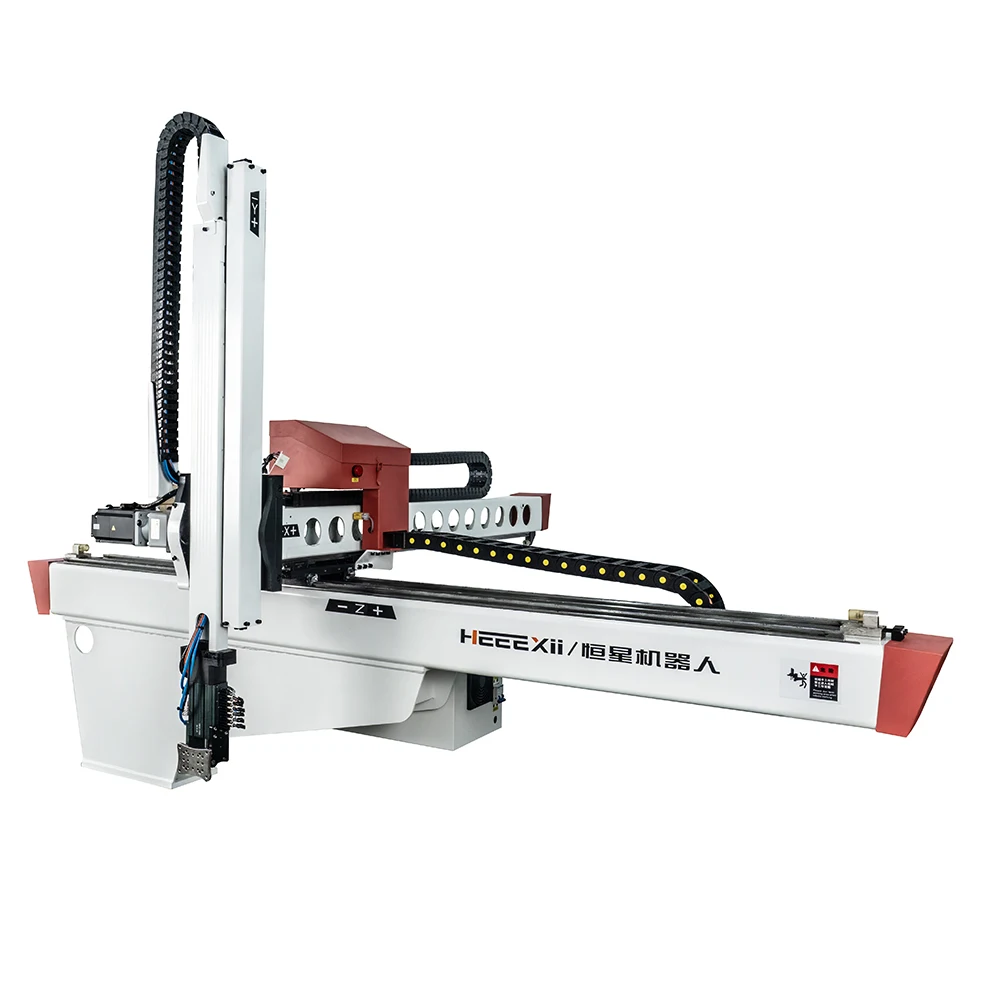Injection Molding in Future Plastics: These New Multi-Axis Robots are Game-Changing!
Technology continues to change the playing field in manufacturing with new solutions and equipment that make facilities more efficient, safer, and easier to operate. The progression of technology along such lines also sparked off a revolution in the field, and one shining example is multi-axis robots used for plastics injection molding. This all-encompassing design of robots is changing the production process in their entirety, as they have a diverse array of uses and conveniences to make them at one time re-define polymer manufacturing landscape.
Benefits of Multi-Axis Robots for Injection Molding
This type of robots is designed to work side by side with injection molding machines, which are mainly used for multiple tasks. From managing multiple molds to carry out the activity, from insert objects into these mold without autonomy, to remove finished products and also conducting inspection and part sorting methods this robots are very good in production.
Key benefitsMulti-axis robots significantly increase productivity, which forms one of the major advantages. These robots operate extremely faster, and with much higher precision as well - tirelessly working for longer durations without tiring out or making mistakes. This increased efficiency produces a faster rate of production and greater return on investment for manufacturers.
In addition, if you choose to integrate multi-axis robots into your facility for any purpose--secondary or primary production operations that fall into the category of System(s) Category 2 (including tasks using collaborative mode as described in Section 5.10 with applicable attainable force and speed), this significantly adds more layers towards safety standards.Source These robots, by reducing virtually all prospects for human error and the dangers of physical harm inherent at this stage in some production environments are transforming a range of dangerous goods manufacturing line tasks where contact between humans hands with toxic content or equipment is close to necessary into surefire secure putting out generation area.
Multi-axis robots - Innovation
The continual innovation in automation has led to the development of multi-axis robots. With the advanced software, sensors and high precision components on the latest models of these robots their speed, accuracy & usability have reached an unprecedented level.
The easy-to-use software interfaces allow operators to program robot movements with speed and precision. In addition, the use of sensors allows to detect if there are anomalies such as poorly positioned parts or a malfunction that compromise continuous operation. In addition, automated inspection and quality control systems improve end product quality and save costs in the long term.
Industries In Which Multi-Axis Robots Can Be Employed
While multi axis robots are used in many areas of the plastics industry. These robots are used for manufacturing parts such as dashboards and door panels, e.g. in the automotive sector or streamlining process line of PET bottles production or capping like: packaging industry.
These robots can quickly and efficiently thrive in mass-production surroundings as they autonomously cut sprue, weight parts, stack them together or separates the finished ones. Their ability to work in multiple kinds of molds, this is something that helps the manufacturer as they get more flexibility for their production process thus making them competent enough and help full filling different requirements effortlessly.
Automation / Motion Control: MULTIPLE AXIS ROBOTS GET EASIER TO MASTER
The operation of multi-axis robots is pretty easy and with some training, the operator can command these machines without any hurdle. Robot interface for navigation and programming as well, the programs can be written in computer & mobile applications too.
Before introducing a robot into the mix, businesses must evaluate their production needs and choose which robots would best support overall operations. Efficient robot and part design can be maximised if synchronising the robots setup with new mould specifications. All personnel should undergo comprehensive training when using and caring for these systems, so that they are able to work optimally.
Guaranteeing Good-Quality of Service
In order to maximize the options for multi-axis robots, it is essential that manufacturers offer an integrated range of service support, including maintenance and repair services as a minimum. These automatic systems can run at maximum capability for long periods to optimize their operational life through regular maintenance.
It is important that they work regularly with a trustworthy service provider to address issues quickly, do routine maintenance and find spare parts when necessary. Using predictive maintenance methods such as continuous performance monitoring, manufacturers can identify and address potential areas of concern prior to any failure occurring.
Learn More About the Many Uses for Multi-Axis Robots
The applications of multi-axis robots in the injection molding industry are wide-ranging and significant. These bots are largely found in high-volume and high-speed environments where they help decrease cycle times while driving costs down by increasing productivity. Their capacity to decrease scrap rates and increment accuracy is soon demonstrated, establishing them as a critical asset in driving the plastic manufacturing field forward.
Finally, the arrival of multi-axis robots represent a new era of innovation and productivity in plastic injection molding. Not only do they make for higher production rates - their safety features and user-friendly interfaces also lead to better quality control, reduced overhead costs. We can expect multi-axis robots to be a key player in the plastic injection molding arena with more and unique features based on how robotic technology is going.
 EN
EN
 AR
AR
 BG
BG
 HR
HR
 CS
CS
 DA
DA
 NL
NL
 FI
FI
 FR
FR
 DE
DE
 EL
EL
 HI
HI
 IT
IT
 JA
JA
 KO
KO
 NO
NO
 PL
PL
 PT
PT
 RO
RO
 RU
RU
 ES
ES
 SV
SV
 LV
LV
 SR
SR
 UK
UK
 VI
VI
 HU
HU
 TH
TH
 TR
TR
 FA
FA
 MS
MS
 GA
GA
 BE
BE
 IS
IS
 LA
LA
 MN
MN
 KK
KK



